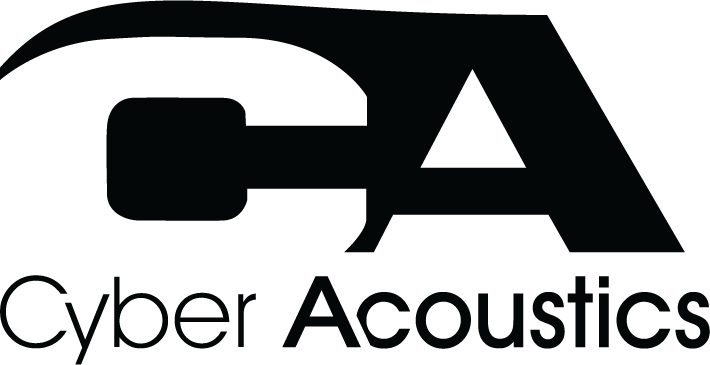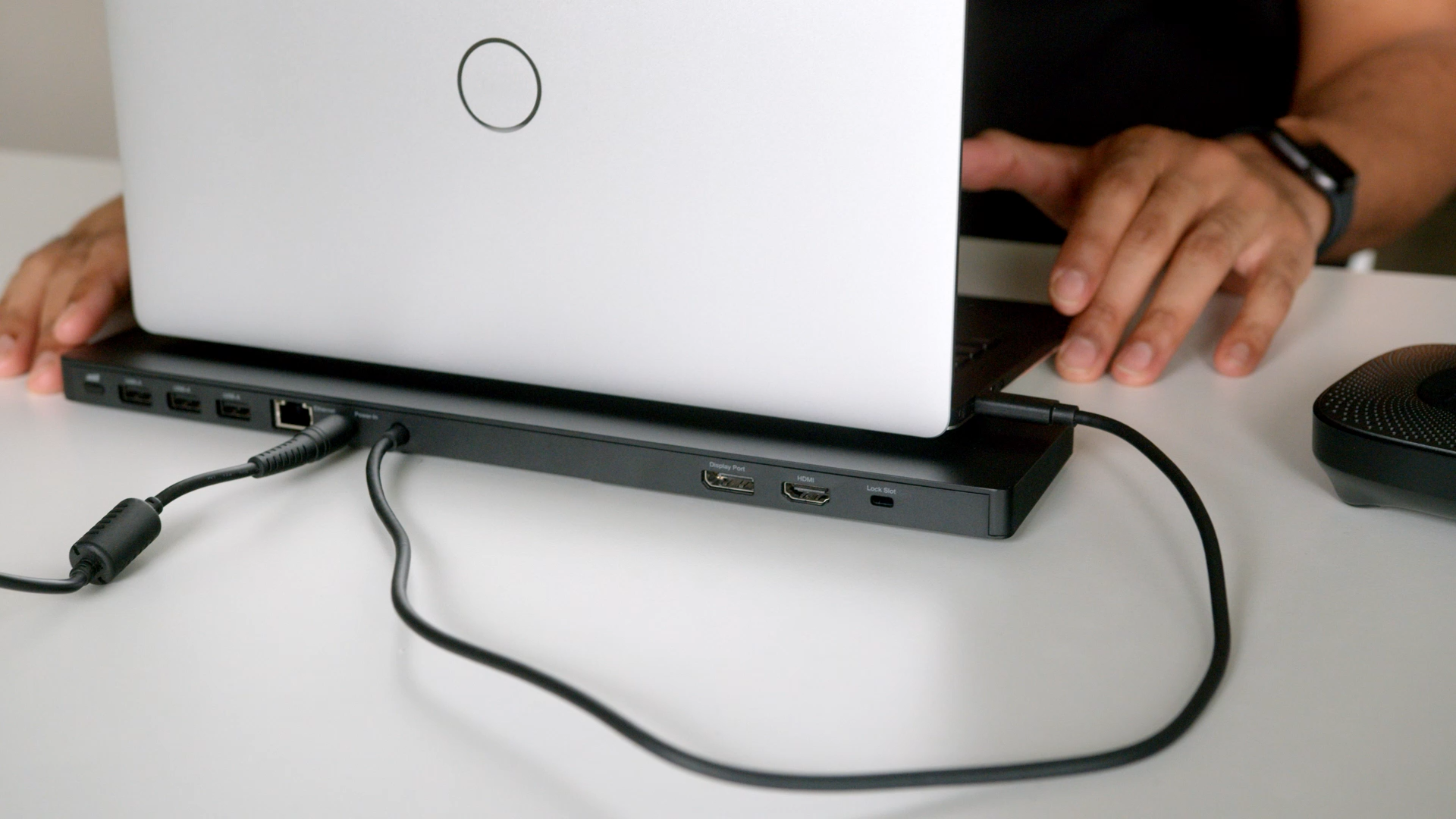Commonly Asked Questions When Choosing a Laptop Docking Station
Why should you consider getting a laptop docking station?
A laptop docking station allows you to achieve a desktop-like experience from your laptop or MacBook by extending its functionality. They are a great way to make your work-from-home setup more professional, enabling dual or triple monitor support for enhanced productivity.
Laptop docking stations are also the perfect solution for offices with hybrid workforces that utilize a hoteling style of work. This flexible style of work allows employees to make the most of their time in the office by providing them with complete workstations where all they need to do is plug their laptop into the dock, and they instantly have access to multiple monitors and other PC peripherals that improve their working experience. For more information on how to choose a docking station visit https://www.cyberacoustics.com/choosing-the-right-laptop-docking-station.
What to look for when choosing a laptop docking station?
The most important factor in choosing a laptop docking station is ensuring compatibility with your laptop or MacBook. You will want to think through your desired setup to ensure you look for the right category of docking stations. Some good questions to start with are:
What is the desired number of simultaneous monitor displays? It’s well documented that dual monitors increase productivity and other studies show the use of three monitors further increase productivity over the use of two. Reducing the amount of time toggling between tabs, apps, meetings, and chats enables faster workflow with fewer clicks, so think about what an ideal setup looks like for you.
How many peripherals do you need to connect and are they USB-C or USB-A? Look for a dock that has the right number of ports to connect your devices. Supported devices could include keyboards, mice, USB-powered speakers, printers, speakerphones, headsets, webcams, etc.
Do you need laptop cooling? Some docks, like the CA Essential Docking Station DS-2000 offer built-in cooling fans to help improve laptop performance. If you use a high-powered or older model laptop, this may be a valuable feature for you.
Next determine if your laptop supports Thunderbolt 3 or 4, which will be designated with a lightning bolt symbol next to one of the USB-C ports. It’s important to know that even though Thunderbolt 3 and 4 have incorporated USB-C connectors, it is distinctly different from USB-C. Understanding the capability of your laptop or MacBook will help guide on what features are available to you from a laptop docking station. For example, the CA Essential Universal Docking Station DS-6000 offers triple 4K HDMI monitor support for laptops that have Thunderbolt 3 or 4 technologies, but if your laptop does not have Thunderbolt 3 or 4 the DS-6000 will enable dual 4K monitors to run simultaneously.
Understanding this may save you time and tech support calls.
For more details on the different laptop docking stations offered by Cyber Acoustics visit https://www.cyberacoustics.com/essential-docking-stations.
How can I find out if my laptop has Thunderbolt?
The quickest way to determine if your Mac or PC laptop has Thunderbolt is to look for the Thunderbolt icon next to your device’s USB-C port. Look for a symbol with a lightning bolt arrow, like in the picture. Additionally, the laptop manufacturer will have more information on each USB-C port in the computer’s manual. Typically these manuals are found on the laptop manufacturer’s website.
Is USB-C the same as Thunderbolt?
Thunderbolt and USB-C are not the same. Thunderbolt 3 and 4 ports are designed for use with USB-C but this is still a different type of connection technology. It’s important to understand that just because Thunderbolt has incorporated USB-C connectors, not all USB-C ports will support Thunderbolt. For a deeper dive on Thunderbolt technology check out this Digital Trends story.
If you are looking at the CA Essential Universal Laptop Docking Station DS-6000, check your laptop for compatibility. The DS-6000 can support up to three HDMI displays on laptops with Thunderbolt 3 or 4 technologies. For older laptops without Thunderbolt, DisplayPort Alt Mode will still support dual HDMI displays, using DisplayLink technology.
Do I need an expensive laptop docking station?
No, but you should do your research first on what your laptop supports for connection technologies. Ideally if your laptop supports Thunderbolt 3 or 4, products such as the CA Essential Docking Station DS-2000 or CA Essential Laptop Docking Station DS-1000 will be your most cost-effective solution. If your laptop is older and doesn’t support Thunderbolt, then the slightly more expensive DisplayLink technology docks, like the CA Essential Universal Docking Station DS-6000 will meet your needs without having to buy a new laptop.
At the end of the day, the key is the connection technology and the type of ports you need from your docking station. Almost all docks are designed the same when supporting Thunderbolt/DisplayPort Alt-Mode or those that support DisplayLink technology. The main difference is the brand, number of ports, and connection technology supported by the dock.
How do I connect speakers to a laptop docking station?
USB-A or USB-C powered speaker systems will easily connect to most laptop docking stations, including the Cyber Acoustics DS-1000, DS-2000, and DS-6000.
What is the difference between DisplayLink and DisplayPort Alt Mode?
DisplayLink is a technology owned by Synaptics that enables computers and displays to connect via USB Type A or C regardless if they support the new Thunderbolt technologies. It also enables multiple displays to be connected to a single computer.
DisplayPort is a digital display interface standardized by the Video Electronics Standards Association (VESA). DisplayPort Alt Mode is distinctly different and allows a USB-C equipped computer to connect directly to a monitor.
In the case of the CA Essential Universal Docking Station DS-6000, which features three HDMI ports, HDMI 1 and 2 utilize DisplayLink technology while HDMI 3 utilizes DisplayPort Alt Mode, which is compatible with laptops supporting Thunderbolt 3 or 4 technologies.
Your laptop compatibility will determine if the DS-6000 is able to support dual or triple 4K monitors. The simplest way to determine which technology your Mac or PC supports is to look for the Thunderbolt symbol next to your laptop’s USB-C port. If your laptop has Thunderbolt 3 or 4, you will be able to run three simultaneous 4K displays.
If your laptop does not support Thunderbolt 3 or 4, the DS-6000 will support dual 4K monitor displays via HDMI 1 and 2 using DisplayLink. For DisplayLink, you may need to update the drivers. To determine which drivers you currently have, and to install the latest versions visit https://support.displaylink.com/knowledgebase/articles/533875-how-to-identify-the-displaylink-software-version-i
What is the difference between a docking station and a port replicator?
While these terms are often used interchangeably today, a port replicator typically does not supply power to a laptop, while a laptop docking station will often power and/or charge your laptop while in use. Port replicators do not supply power to the connected laptop because most of the time they do not come standard with their own power adapter, instead they draw power from the laptop, which is limited, to power the available ports on the replicator. The ports will not operate simultaneously. This drawback is not a problem with docking stations because the power adapter has enough power to power the dock and supply power to the laptop.
Port replicators also do not typically offer multiple monitor support, which is a key benefit of a laptop dock.
Windows and Mac Compatible
Works With Your Platform Of Choice
Looking for more guidance or information? Check out what these experts have to say!
| Cyber Acoustics | Choosing the right laptop docking station |
| Jon Peddie Research | Multiple Displays can Increase Productivity by 42% |
| Jon Peddie Inc. | Why I Use 3 Monitors to Boost Productivity (And You Should, Too) |
| Digital Trends | What is Thunderbolt, and is it different from USB-C? |
| Synaptics | DisplayLink Graphics |
| DisplayPort | DisplayPort |
| VESA | Video Electronics Standards Association (VESA) |
| DisplayLink | How to identify the DisplayLink software version installed |



















